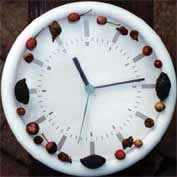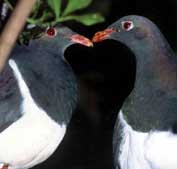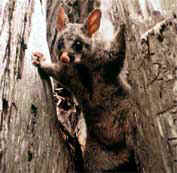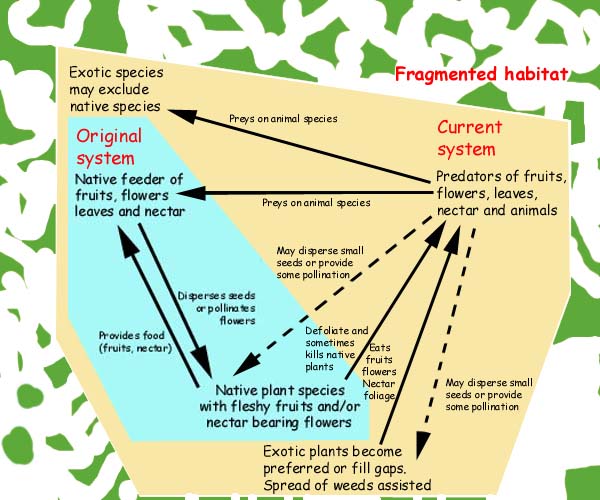Links
![]()
This website will (for the most part) host information about;
The interactions between native fruit and flower producing plants, native animal species that pollinate flowers and/or disperse fruits, and the non-native mammals (mostly) that prey on both native animals and native plants. However both exotic plant and animal species, and forest fragmentation have changed the pollinator/frugivore (eater of fruit) relationship with native plants.
Some of the past and current interactions for the native species are shown below (rather simplified).
![]() Native
animals - mostly birds, reptiles, insects and one species of bat came to feed
from the nectar produced by the flowers of native plants. In the process
they also spread pollen from one plant to others. They, mostly birds and
reptiles, also ate the fruits of the New Zealand native plants and spread the
seeds around, helping the plants to establish in new areas. Both the
plants and animals derived benefits from this system; animals got food and
plants were pollinated and/or dispersed.
Native
animals - mostly birds, reptiles, insects and one species of bat came to feed
from the nectar produced by the flowers of native plants. In the process
they also spread pollen from one plant to others. They, mostly birds and
reptiles, also ate the fruits of the New Zealand native plants and spread the
seeds around, helping the plants to establish in new areas. Both the
plants and animals derived benefits from this system; animals got food and
plants were pollinated and/or dispersed.![]()
Introduced
Both native
and exotic animals will also feed on introduced plant species and can therefore
spread weed seeds.![]()
Furthermore, the landscape in which all these events take place used to be nearly continuous forest from the coast to the alpine scrub zone. Forest clearance and other land development means that the original land cover is now fragmented and no longer functions as one unit. This also has implications for the movement of animals species, and therefore the potential for flowers to be pollinated and seed dispersed.
To keep the pages simpler the phenology observations for non-native plants and the pollination/dispersal events seen for non-native animal species have been put on a separate set of pages.
The sort of information that you can find here includes;
|
The timing of fruiting and flowering (phenology) of New Zealand native tree and plant species.
| |||||||||||||
|
Which native animal species are known to eat fruits, flowers, nectar, and foliage.
| |||||||||||||
|
The impacts of introduced pest species on plant and animal species.
| |||||||||||||
Anecdotal & incidental observations
|
Click on any of the pictures below to go to a page of interest
Non-native dispersers Non-native phenology
![]()






